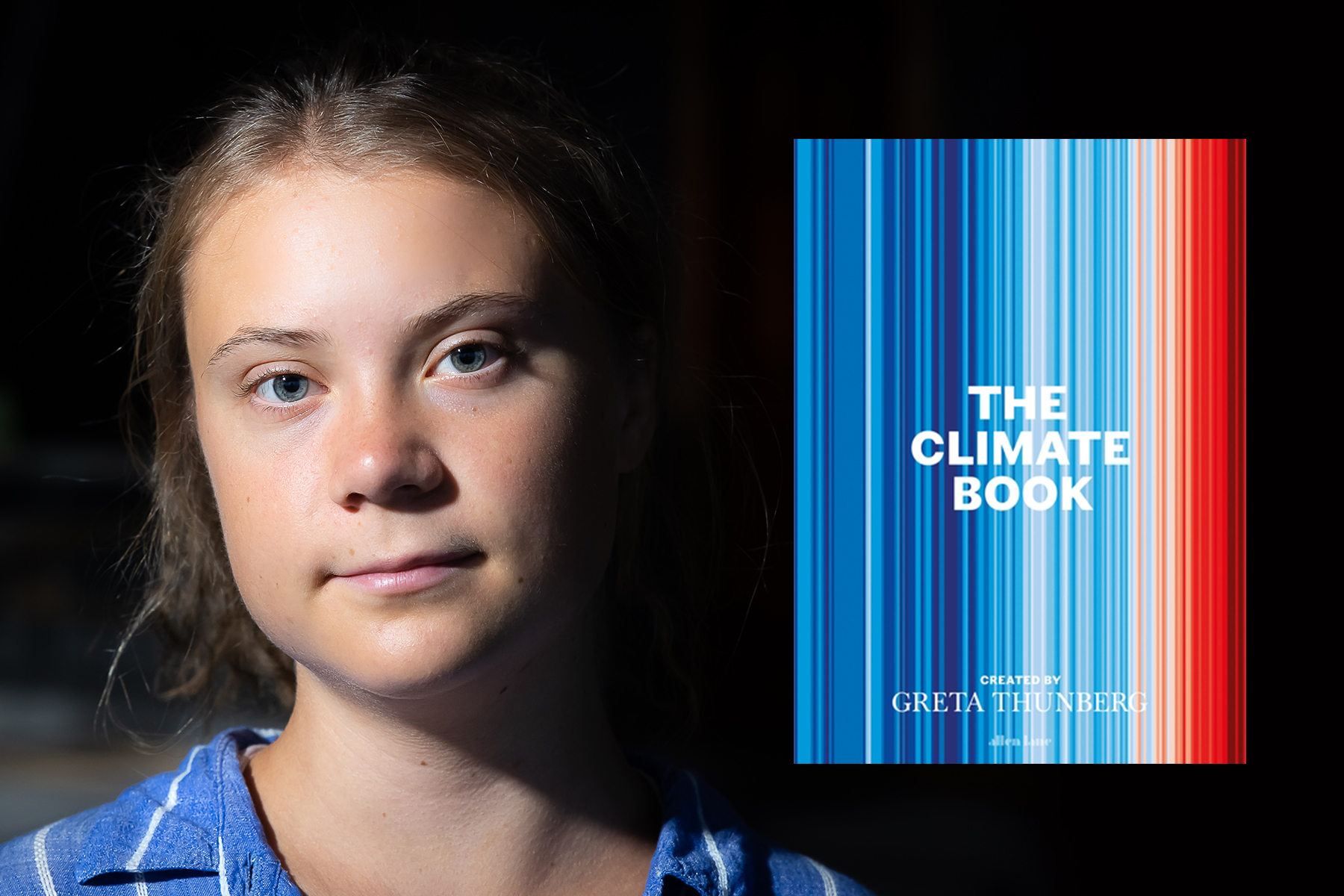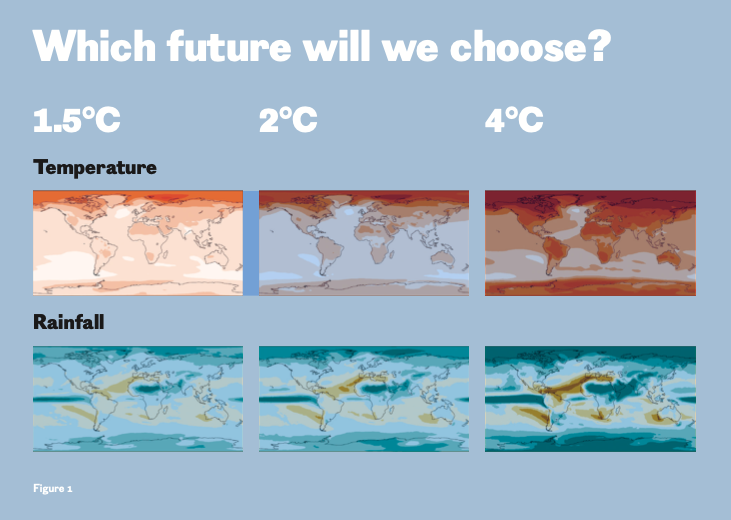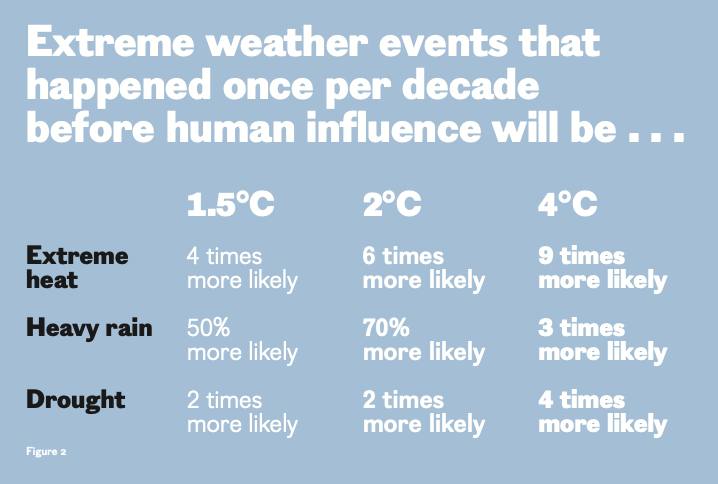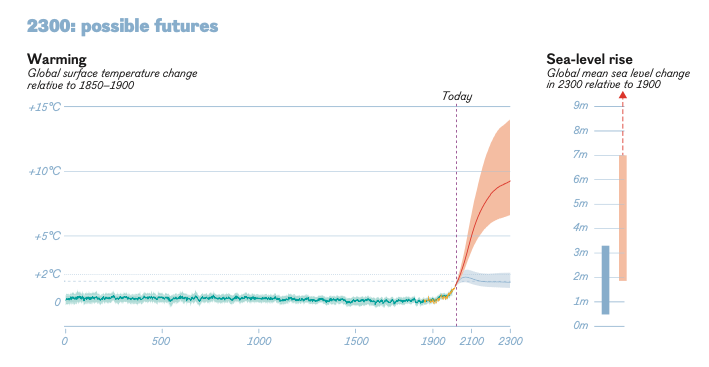- Home |
- Search Results |
- What happens at 1.5, 2 and 4°C of global warming?
What happens at 1.5, 2 and 4°C of global warming?
In this essay extract from Greta Thunberg’s The Climate Book, British climate scientist Tamsin Edwards discusses the consequences of rising temperatures worldwide – and how to stop them.

We’ve started to notice. Now we’re at just over 1°C of warming. Heatwaves are breaking records. Floods are devastating even the most well-prepared countries. Ferocious fires are burning forests, villages, the frozen north.
It’s not just our imagination, or greater media coverage: the climate has changed. The kind of heat that was expected only once a decade before human influence is now three times more likely. Extreme heavy rain is now 30 per cent more likely. Droughts – less rain, and drier soil – are 70 per cent more likely. And scientists can now see a human fingerprint on some of the worst events in living memory, some of which we have made three, or ten, or a hundred times more likely; some of which would have been virtually impossible without our influence.

So how different will our world feel at 1.5°C or 2°C, the lower and upper limits of the Paris Agreement (Fig. 1 above)? And how will things change if we ignore this global pledge and keep increasing our emissions at the current rate – doubling them by the end of the century – reaching 4°C? Three or four degrees of warming may not sound like much, but the last time global temperatures were more than 2.5°C warmer than pre-industrial levels for a prolonged period was over 3 million years ago. When our ancestors were beginning to craft stone tools.
The changes our planet will experience will increase with each half a degree of heating. Warming will be faster over the land and polar regions. The Earth’s water cycle will become amplified: many parts of the world that are already wet will have more heavy rain, and places that are already dry will have more droughts. Monsoons will change.
Many kinds of extreme weather will continue to worsen (Fig. 2 further down). At 1.5°C, the kind of extreme heat previously seen once a decade will be four times more likely, with hundreds of millions more people exposed to deadly heatwaves by the middle of the century. At 2°C, this extreme heat will be nearly six times more likely, and at 4°C these temperatures we previously considered extreme will be seen nearly every year. Extreme rainfall and drought will also become more frequent and severe.
Our Earth will look progressively different from space. By 2050, even at 1.5°C of warming, sea ice covering the Arctic Ocean will almost disappear in at least one September, revealing a dark ocean. If the sea ice does disappear, it will regrow the following winter as a thinner, more delicate cover. At 3–4°C of warming it will disappear entirely during most summers, or perhaps in all.

Four degrees is not the most warming we could imagine reaching. In the longer term, there are a huge range of possible futures, depending on our choices. The left panel in Fig. 3 (below) shows the stable temperatures of the past 2,000 years, followed by scenarios of future warming until the year 2300.
We could act to limit warming to the lower end of that range, 1.5–2°C. Even at these temperatures, we would still lose many or most of the world’s glaciers, heat the oceans and erode the ice sheets. But sea-level rise by 2300 (the blue bar in the right panel of Fig. 3) would be somewhat limited. If we’re lucky, it would rise by half a metre, although it could reach 3 metres – enough to change coastlines around the world.

Or we could choose to keep increasing the greenhouse gases in Earth’s atmosphere, decade upon decade, century upon century, and travel to an unrecognizable planet: 10°C hotter by the year 2300. Every glacier in the world would be lost. Each year, we would increase the risk of destabilizing the Antarctic Ice Sheet – if we have not already – which would rapidly increase sea-level rise for centuries. In such a world, the seas could rise by up to 7 metres, shown by the red bar in Fig. 3. If we are unlucky, and Antarctica is particularly sensitive, the seas could rise by much more.
What if we could stop our emissions instantly? Some parts of the planet would keep on changing as they continue reacting to our past emissions. The world’s glaciers would continue to retreat for decades or centuries, and the oceans would continue to warm. This means the seas will rise and there will be more coastal flooding, no matter what we do.
One day in the distant future, we may be able to reverse some of the impacts of climate change, if we can reduce temperatures back to previous levels by removing the excess carbon dioxide from the atmosphere. Our weather could become more normal again and the Arctic sea ice could return each summer. After a very long time, we might even see some re-advance of the glaciers. However, it will not be possible to reverse many of the other changes to the planet in any meaningful human timescale. The oceans will be warmer, the ice sheets will be diminished and sea levels will be higher for hundreds to thousands of years.
'What happens next is up to us; future generations will know how we did'
Tamsin edwards
So, what do we need to do? It’s simple. The IPCC has said that “unless there are immediate, rapid, and large-scale reductions in greenhouse gas emissions, limiting warming to close to 1.5°C or even 2°C will be beyond reach”.
How are we doing so far? A world of ever-increasing burning of fossil fuels would heat up by 4–5°C by 2100. Thankfully, we have put some policies in place that make it far less likely that we will face that future. We have also made progress in technology and in the way we live. So, if those policies are successfully enforced, warming is now predicted to be less than 3°C this century.
We have also made promises of what we intend to do, including the national pledges under the Paris Agreement for how much each country will cut their emissions by the year 2030, and statements about when they plan to stop adding greenhouse gases to the atmosphere completely. If we stick to those promises, warming will be limited to just over 2°C, and perhaps even less than 2°C. Every time a new policy or pledge is made, these predictions gradually tick down.
Every single new policy – every single tonne of carbon dioxide we avoid emitting – will bring future global warming further down, towards our target of 1.5–2°C. As we have seen, there would still be serious consequences even at these levels of warming, and the last degree or so will be the hardest to avoid. But climate change is not something that is simply won or lost. It is a curve that we can keep bending towards a better world. The future is looking better than we imagined, but it is not yet as good as we hope. What happens next is up to us.
Future generations will know how we did.